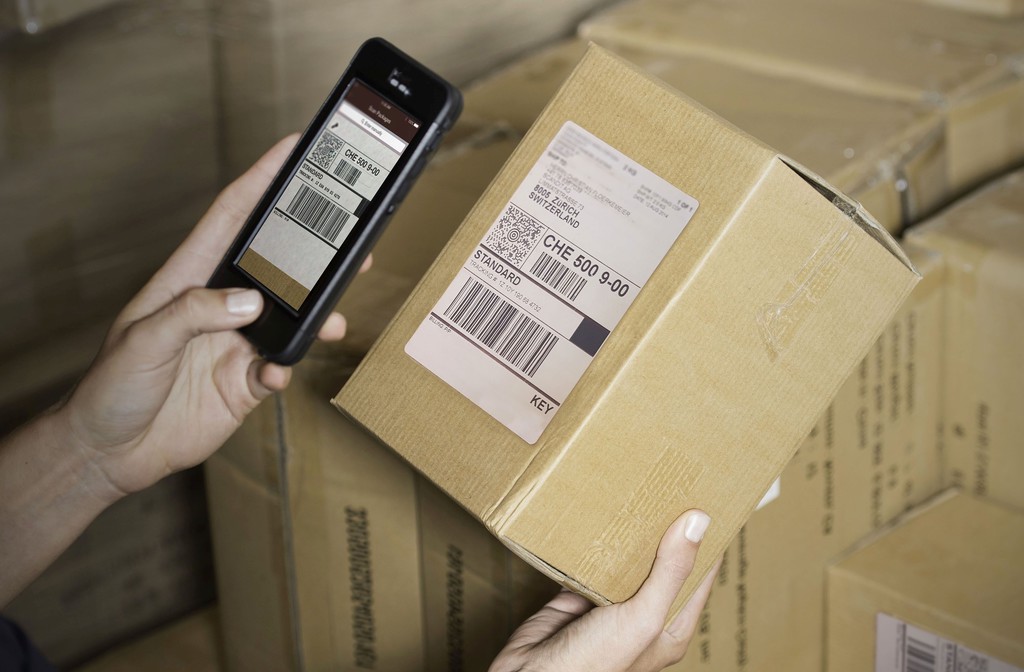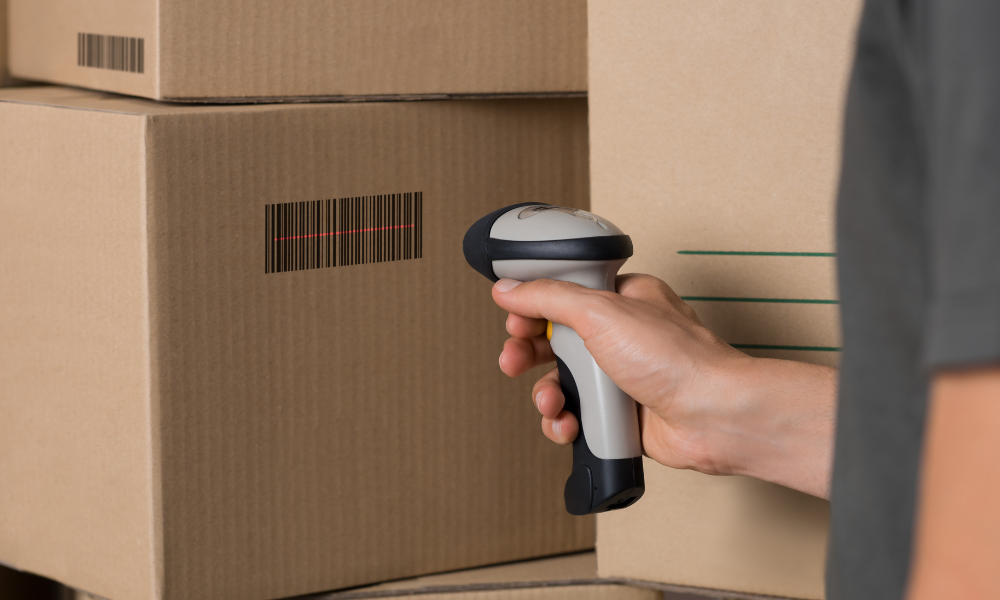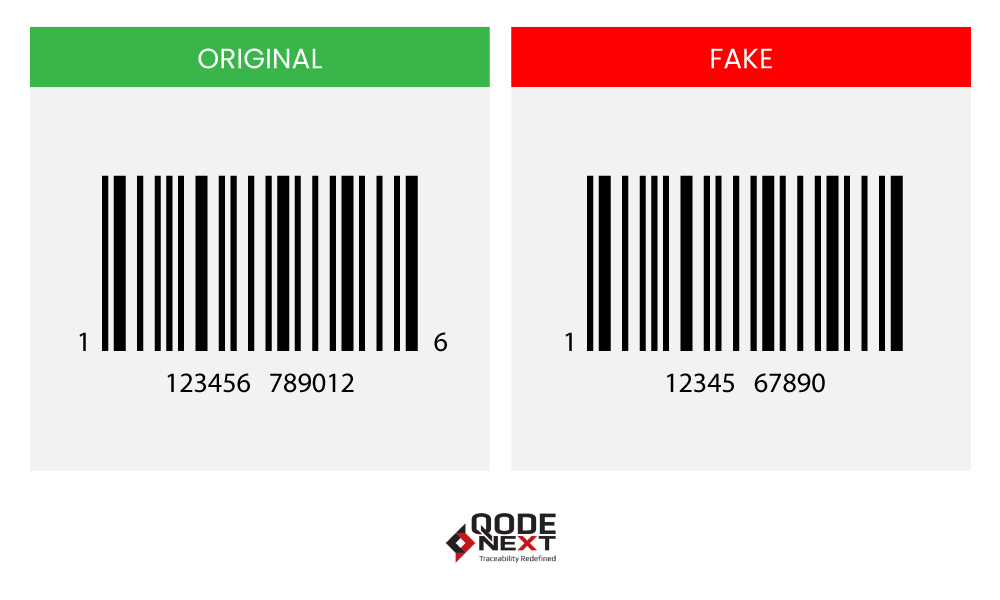Products that are fake hurt companies financially, but they also have an impact on the customers who inadvertently buy them. Consider purchasing a product that is identical to the original in appearance but falls short in terms of quality. How would that make you feel?
Such instances put customers’ safety in jeopardy in addition to undermining their trust in the company. As a result, companies must start using barcodes to prevent the selling of fake goods.
Applying a barcode system enables companies to protect the needs of their consumers and ensure that they receive the authentic products they have the right to.
Let’s take a closer look to see how to check product authenticity using barcode to uphold your company’s brand reputation and encourage consumer trust.

What Are Fake Products?
Fake products are those that have been purposefully manufactured and sold under false pretenses, selling themselves as real. These products are offered illegally and do not match the original product’s quality standards in any given case.
Luxury goods, medicines, and even food products are some examples of counterfeit goods. In some situations, these products can constitute a major hazard to customers’ health and safety, necessitating industry solutions to prevent the creation and sale of fake products.
What is the Impact of Fake Products on Brands and Customers?
Fake products are a growing problem for companies, affecting almost every sector. The effects of fake items can be devastating for both brands and customers. The widespread availability of these items can harm a company’s reputation and weaken customer trust. Customers may choose the cheaper products over the genuine items, which can lower sales and revenue of a company.
In spite of that, customers who unknowingly purchase fake products can suffer from a variety of negative consequences. These can range from disappointment and frustration with the product’s performance, to serious health risks if the product is a counterfeit medication or food item.
Consumers who have been duped by fake products may also become hesitant to purchase from that brand again, further damaging the brand’s reputation and financial success.

How to Identify Fake Products Using Barcode?
Barcodes give companies a strong tool for tracking and authenticating products. A barcode is a special arrangement of vertical bars that contains details specific to a product. A product’s manufacturer, product number, and serial number can all be found using barcodes.
They are also used to monitor the sale and distribution of the product. Industries can rapidly check product authenticity by barcode, assuring that the product is genuine. The barcode also offers thorough product details, such as the product’s manufacturing date, batch number, and expiration date, allowing enterprises to keep track of the product’s lifecycle.
Difference Between Original and Fake Products
Many industries are using barcodes to identify fake products and make sure that only genuine products reach the market in order to tackle the fake product problem. Here is a table highlighting the fundamental distinctions between genuine items and imitations that the manufacturing sector has to be aware of.
| Original Products | Fake Products |
| Manufactured by the original product manufacturer | Produced by unauthorised manufacturers |
| Meet specific quality standards | Do not meet quality standards |
| Come with a unique serial number or barcode for tracking and verification | Lack a unique serial number or barcode |
| Often more expensive due to their quality and authenticity | Sold at lower prices to attract unsuspecting customers |
| Protect the brand reputation and maintain customer trust | Undermine brand reputation and erode customer trust |
What Are Some Signs of Fake Products?
Knowing how to spot phoney products is essential if your business values quality and authenticity. Not only do counterfeit items result in money losses, but they also harm the company’s reputation. As a result, it’s critical to recognise the common signs of fake products. Here are top 5 common signs that can help you spot fake items .
- Poor packaging – Fake products often have bad packaging with typos, shoddy graphics, or poor print. Look out for packaging that doesn’t seem quite right or differs from the genuine item.
- Unusual texture – The texture of fake goods may be different from that of the real items. For instance, fake clothing could have scratchy or abrasive fabric, and fake makeup might be different in texture or consistency from the original.
- Missing features – Fake products may lack important features or components found on real products. For example, counterfeit electronics may lack specific ports or connectors.
- Low price – If a product is being sold at a considerably cheaper price than usual, this could indicate that it is fake.
- Lack of warranty or support – While counterfeit goods lack a warranty and support, genuine goods frequently do. It can be a hint that a product is fake if no warranty or customer assistance is provided.

Barcode Scanning for Product Authentication
Barcodes give each product a unique ID that companies may use to spot counterfeit goods. A unique number is contained in each barcode and is given to each product. The barcode number is saved when a product is scanned, enabling the business to follow the product along the supply chain. It is easy using barcode scanner for genuine products.

How Do Industries Use Product Serialisation to Track a Product’s Lifecycle?
A product is serialised when a special code is given to it that may be used to identify and authenticate it. The distinctive identifier is frequently displayed as a barcode or QR code that is scanned to confirm the product’s legitimacy. Industries can follow a product’s lifecycle, from manufacturing to distribution to sale, thanks to serialisation. Industries can identify counterfeit goods with the help of serialisation, ensuring that only real goods are sold.
Challenges in Identifying Fake Products
Businesses now find it more difficult to identify and stop bogus products from entering the market due to the surge in counterfeit goods. The following are some of the major difficulties companies encounter when spotting phoney products:
- Similarity to authentic products -Since counterfeit goods frequently use the same components as genuine items, it can be hard to distinguish them apart without careful inspection.
- Sophisticated packaging – The packaging of many fake products is difficult to distinguish from that of the genuine article, making it challenging to spot them.
- Complex supply chains – It can be challenging to detect counterfeit goods since they can enter the market at any point in the supply chain, especially for big organisations with intricate supply chains
- Rapidly evolving techniques – Since fraudsters are always developing new methods to make their goods appear more legitimate, it can be challenging for firms to stay up to date with the latest developments.
- Legal challenges – When companies are operating in countries with weak intellectual property rules, it may be difficult for them to pursue legal action against counterfeiters.
How to Check Barcode Authenticity?
How to check original product from barcode? You can consider the following factors:
- Barcode Quality: Look at the overall quality of the barcode. Authentic barcodes tend to have clean, crisp lines and consistent spacing between the bars and digits. Poor print quality, smudging, or irregular bar patterns may indicate a counterfeit barcode.
- Barcode Placement: Examine the barcode’s position on the product packaging. Legitimate products often have barcodes placed in standard locations, such as the bottom right corner or back of the packaging. If the barcode appears to be haphazardly placed or doesn’t align with typical positions, it could be a sign of tampering.
- Barcode Size and Proportions: Authentic barcodes adhere to specific size and proportion standards. If the barcode appears unusually large, small, stretched, or compressed, it may indicate an altered or counterfeit barcode.
- Barcode Labels or Stickers: Pay attention to any labels or stickers placed over the barcode. These can be used to conceal or alter the original barcode. Check for signs of tampering, such as mismatched edges, visible adhesive marks, or inconsistencies in the label material.
- Security Features: Some barcodes incorporate security features to prevent counterfeiting. These features may include holographic overlays, special inks, or hidden markings that can be revealed under specific conditions. Check for the presence of such security features and verify their authenticity if you are familiar with the genuine product’s characteristics.

Best Practices for Identifying Fake Products
- Implement a serialisation system that gives each product a special serial number.
- Employees should be given the knowledge and resources necessary to recognise phoney goods.
- To make sure that products are not being sold through unauthorised channels, collaborate with merchants and third-party logistics suppliers.
- Maintain a regular market watch to spot fake goods and take measures to halt their production and sale.
How Can SETU Help Businesses Identify and Prevent Fake Products?
SETU is an advanced traceability engine that acts as a bridge between various entities involved in the supply chain, from suppliers to consumers. The system offers an array of modules that generate marks and scan digital twins of finished goods and raw materials throughout the supply chain.
This enables actionable visibility across the product journey and fosters direct communication between organisations and their stakeholders. By providing this level of visibility and connectivity, SETU allows for greater control and transparency throughout the supply chain.
Key benefits of SETU in identifying and preventing fake products:
- The system provides accurate inventory visibility and automates the invoice generation process, making it easier for organisations to keep track of their products.
- SETU uses unique identification algorithms that make it virtually impossible for counterfeiters to replicate number sequences, ensuring that consumers can trust in brands and products.
- The system helps organisations ensure regulatory compliance, keeping them future-proof in case of changes in regulatory scenarios.
- SETU’s line management modules facilitate accurate and efficient product marking, validation, and aggregation, ensuring that companies can properly mark, scan, and aggregate their products.
- The system integrates with the widest range of hardware, enabling efficient product tracking and identification.
Advanced Techniques for Product Authentication
Businesses are resorting to enhanced authentication systems in response to the growing issue of counterfeit items. These procedures make use of a variety of tools and technology to ensure that products are genuine and of the highest quality.
- Microscopic Authentication
Microscopic authentication looks at a product’s texture, colour, and design in great detail. This method can be used to spot minute variations between real and fake goods that are difficult or impossible to spot with the naked eye.
- Holographic Authentication
Holographic pictures or labels that are challenging to duplicate are used in holographic authentication. It is difficult for counterfeiters to produce products with the identical holographic picture by adding these holographic labels to the product packaging or the actual product.
- RFID Technology
Small, attachable electronic tags are used in radio-frequency identification (RFID) technology to identify products. These tags give details about the product, such as where it was made, when it was made, and other crucial information. Authorised workers can retrieve this data using specialised RFID scanners, making it simple to confirm the product’s validity.
- Watermarking
A distinctive image or pattern that is incorporated into the product label or packaging is used as a watermark. It is challenging to recreate this image or pattern, making imitation goods with a different watermark simple to spot.
- DNA Marking
DNA marking entails the addition of distinctive DNA sequences to the product during production. Utilising specialised tools, these sequences may be found, making it simple to confirm the product’s validity. One of the most cutting-edge methods for product identification is DNA marking, which is often used for expensive or very susceptible-to-counterfeit goods.
Conclusion
The proliferation of counterfeit goods on the market has a substantial influence on brand reputation and consumer safety. Barcodes provide a dependable method for identifying fake products and maintaining brand reputation.
Product legitimacy, manufacturing date, batch number, and expiration date are all provided by barcodes. Furthermore, the usage of product serialisation aids in the tracking of the product’s lifetime from manufacturing to distribution to sale, allowing sectors to certify the authenticity of a product.
However, spotting counterfeit products remains difficult, especially as counterfeiters’ strategies improve. In the present-day economy learning How To Identify Fake Products Using Barcodes is critical for protecting both businesses and customers. If you’d like to take this step to grow your business, QodeNext can help you take the first step.


